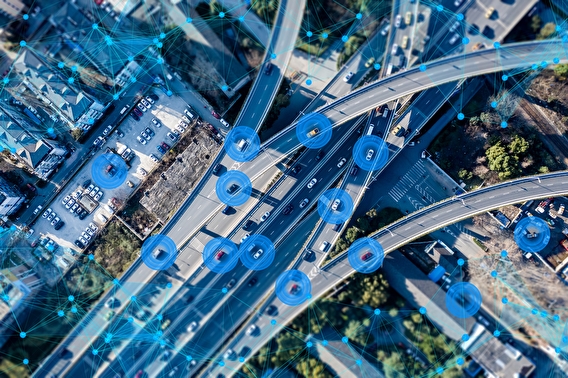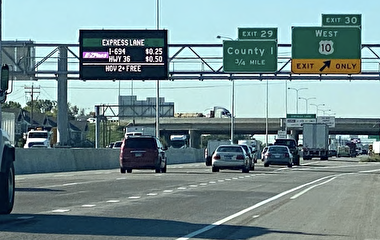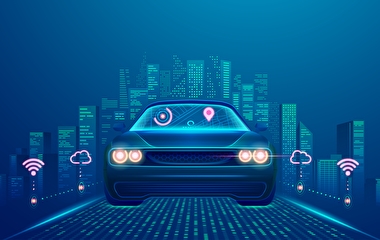
Manufacturers are developing vehicles that will “talk” to each other to avoid crashes. “Vehicles will broadcast basic safety messages about their position, speed, and acceleration,” says Michael Levin, an assistant professor in the Department of Civil, Environmental, and Geo- Engineering.
This messaging from connected vehicles could not only improve traffic safety—it could also provide more reliable real-time data for agencies to use in traffic operations. To prepare for that day, researchers led by Levin developed a new methodology that combines real traffic data with models of the basic safety messages (BSMs) they expect from connected vehicles.
The Minnesota Department of Transportation (MnDOT) sponsored the project. While it may be a decade before this messaging is common on roadways, Levin says, MnDOT wanted to learn how it could plan for and use this messaging for traffic management as well as minimize the transition time required to shift to a data system based on connected vehicles.
Using raw data from the U’s Minnesota Traffic Observatory (MTO), researchers translated hundreds of thousands of vehicle trajectories from I-94 in downtown Minneapolis to emulate BSMs. They used that extensive library of traffic conditions to develop a traffic state estimation algorithm (or estimator), then evaluated how accurately the estimator generated density, speed, flow, travel times, and queue lengths.
Next, the team analyzed the traffic state estimator’s accuracy with more connected vehicles using the roadways—from 20 to 100 percent market penetration. Finally, researchers constructed a traffic monitoring system based on simulated roadside receivers and BSMs to understand the computing power this system would need. This system also allows them to determine the kind of infrastructure the traffic state estimator would require in the field.
“The new methodology we developed and tested could be used to augment or replace current sensors used for traffic controls and traffic information displays,” says John Hourdos, MTO director and the co-investigator of the study.
Currently, MnDOT uses data from loop detectors in pavement (spaced every half mile), freeway cameras, radar detectors, and other sources to estimate traffic conditions and make traffic operation decisions. However, loop detectors can fail and cameras can be obscured. The new system would allow MnDOT to obtain traffic data in between loop detectors and, potentially, replace loop detectors and cameras. Ultimately, richer data could allow the agency to improve traffic flow and improve safety.
“This project helped us understand how we might use messaging from connected vehicles to improve our estimates of travel times and other traffic measures,” says Ray Starr, assistant state traffic engineer with MnDOT’s Office of Traffic Engineering.
According to Levin, this is the first project using BSM data for traffic state estimation, and the estimator looks very promising compared with other traffic models, radar data, and actual roadway situations. In the future, the estimator could be used to describe the steps a transportation agency would take to make full use of data from connected vehicles, he says.
The researchers also identified infrastructure additions that would be required to use the traffic state estimator for traffic management, including roadside units to collect messaging data and robust computing power to run the appropriate algorithms on ever-increasing real-time data.
Writer: Megan Tsai


